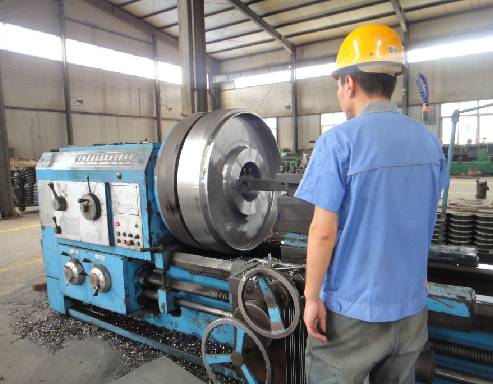 Afrikaans
Afrikaans  Albanian
Albanian  Amharic
Amharic  Arabic
Arabic  Armenian
Armenian  Azerbaijani
Azerbaijani  Basque
Basque  Belarusian
Belarusian  Bengali
Bengali  Bosnian
Bosnian  Bulgarian
Bulgarian  Catalan
Catalan  Cebuano
Cebuano  Corsican
Corsican  Croatian
Croatian  Czech
Czech  Danish
Danish  Dutch
Dutch  English
English  Esperanto
Esperanto  Estonian
Estonian  Finnish
Finnish  French
French  Frisian
Frisian  Galician
Galician  Georgian
Georgian  German
German  Greek
Greek  Gujarati
Gujarati  Haitian Creole
Haitian Creole  hausa
hausa  hawaiian
hawaiian  Hebrew
Hebrew  Hindi
Hindi  Miao
Miao  Hungarian
Hungarian  Icelandic
Icelandic  igbo
igbo  Indonesian
Indonesian  irish
irish  Italian
Italian  Japanese
Japanese  Javanese
Javanese  Kannada
Kannada  kazakh
kazakh  Khmer
Khmer  Rwandese
Rwandese  Korean
Korean  Kurdish
Kurdish  Kyrgyz
Kyrgyz  Lao
Lao  Latin
Latin  Latvian
Latvian  Lithuanian
Lithuanian  Luxembourgish
Luxembourgish  Macedonian
Macedonian  Malgashi
Malgashi  Malay
Malay  Malayalam
Malayalam  Maltese
Maltese  Maori
Maori  Marathi
Marathi  Mongolian
Mongolian  Myanmar
Myanmar  Nepali
Nepali  Norwegian
Norwegian  Norwegian
Norwegian  Occitan
Occitan  Pashto
Pashto  Persian
Persian  Polish
Polish  Portuguese
Portuguese  Punjabi
Punjabi  Romanian
Romanian  Russian
Russian  Samoan
Samoan  Scottish Gaelic
Scottish Gaelic  Serbian
Serbian  Sesotho
Sesotho  Shona
Shona  Sindhi
Sindhi  Sinhala
Sinhala  Slovak
Slovak  Slovenian
Slovenian  Somali
Somali  Spanish
Spanish  Sundanese
Sundanese  Swahili
Swahili  Swedish
Swedish  Tagalog
Tagalog  Tajik
Tajik  Tamil
Tamil  Tatar
Tatar  Telugu
Telugu  Thai
Thai  Turkish
Turkish  Turkmen
Turkmen  Ukrainian
Ukrainian  Urdu
Urdu  Uighur
Uighur  Uzbek
Uzbek  Vietnamese
Vietnamese  Welsh
Welsh  Bantu
Bantu  Yiddish
Yiddish  Yoruba
Yoruba  Zulu
Zulu Types of Pulley Lagging and Their Applications in Various Industries
Understanding Pulley Lagging Types Enhancing Performance and Durability
Pulley systems are integral components in various industrial applications, playing a crucial role in the efficient movement of materials. Lagging is a critical feature in pulley construction that significantly influences both performance and longevity. This article delves into the types of pulley lagging, their purposes, and the benefits they provide in operational settings.
What is Pulley Lagging?
Pulley lagging refers to the process of applying a protective material to the surface of a pulley drum. This layer serves several purposes it enhances friction between the pulley and the belt, minimizes wear and tear, prevents slippage, and reduces the risk of material damage during operation. Depending on operational demands, various materials and techniques may be employed in lagging to optimize the functionality of pulleys in different environments.
Types of Pulley Lagging
1. Rubber Lagging One of the most common forms of pulley lagging, rubber provides excellent grip and durability. It is designed to withstand the harsh conditions of heavy machinery, including abrasion and impact. Rubber lagging is particularly effective in damp or wet environments where slippage can be a significant concern. Different rubber compounds can be used, such as Neoprene or SBR (Styrene-Butadiene Rubber), each offering unique properties suited for specific applications.
2. Ceramic Lagging For extreme abrasion resistance, ceramic lagging is ideal. This type of lagging incorporates ceramic tiles bonded to a rubber backing, providing substantial protection against wear associated with material handling applications. It is particularly popular in industries where the transfer of raw materials occurs, such as mining and quarrying, thanks to its ability to extend the lifespan of both the pulley and the conveyor belt.
3. Polyurethane Lagging Polyurethane is another innovative material used in pulley lagging. It offers excellent wear resistance, flexibility, and the ability to withstand harsh chemical environments. This makes polyurethane lagging suitable for various applications, particularly in the manufacturing and food processing industries where hygiene and sanitation are paramount.
4. Steel Lagging In certain scenarios, steel lagging may be employed for its superior strength and durability. Steel lagging is robust and can endure high-pressure applications, making it suitable for large industrial operations. However, the use of steel lagging also requires considerations for maintenance and the potential for corrosion, demanding protective coatings or treatments.
pulley lagging types

5. Textile Lagging This type of lagging is made from woven fabrics, such as nylon or polyester. It is generally used in lower-load applications where the friction properties and reduced wear are necessary without the bulk and weight of traditional materials. Textile lagging is lightweight and flexible, making it an attractive option for applications in compact spaces.
Benefits of Proper Lagging
Utilizing the correct type of pulley lagging optimizes the performance of the conveyor system and extends the life of both the pulley and the belt
. Here are several benefits of appropriate lagging- Increased Friction and Grip By ensuring a secure contact between the pulley and the belt, lagging contributes significantly to the efficient transfer of power and materials, minimizing slippage.
- Wear Resistance Protective lagging materials drastically reduce the wear on both pulleys and belts, thus diminishing maintenance costs and downtime in industrial operations.
- Reduced Noise Lagging can contribute to noise reduction during operation, creating a more pleasant working environment and lowering sound pollution, which is a crucial factor for worker safety and comfort.
- Customizable Solutions With different types of lagging, companies can tailor their pulley systems to meet specific operational conditions, including temperature, load, and environmental exposure.
Conclusion
Investing in the appropriate type of pulley lagging is essential for maximizing efficiency in material handling systems. Understanding the various options—rubber, ceramic, polyurethane, steel, and textile—enables businesses to make informed decisions based on their specific needs. By selecting the right lagging, organizations can ensure safer operations, reduced maintenance costs, and enhanced performance, ultimately leading to improved productivity in their industrial processes.
-
Revolutionizing Conveyor Reliability with Advanced Rubber Lagging PulleysNewsJul.22,2025
-
Powering Precision and Durability with Expert Manufacturers of Conveyor ComponentsNewsJul.22,2025
-
Optimizing Conveyor Systems with Advanced Conveyor AccessoriesNewsJul.22,2025
-
Maximize Conveyor Efficiency with Quality Conveyor Idler PulleysNewsJul.22,2025
-
Future-Proof Your Conveyor System with High-Performance Polyurethane RollerNewsJul.22,2025
-
Driving Efficiency Forward with Quality Idlers and RollersNewsJul.22,2025





























